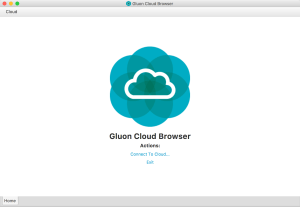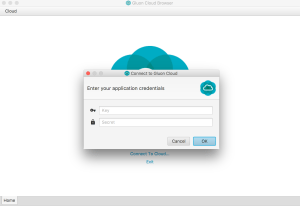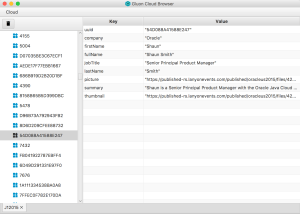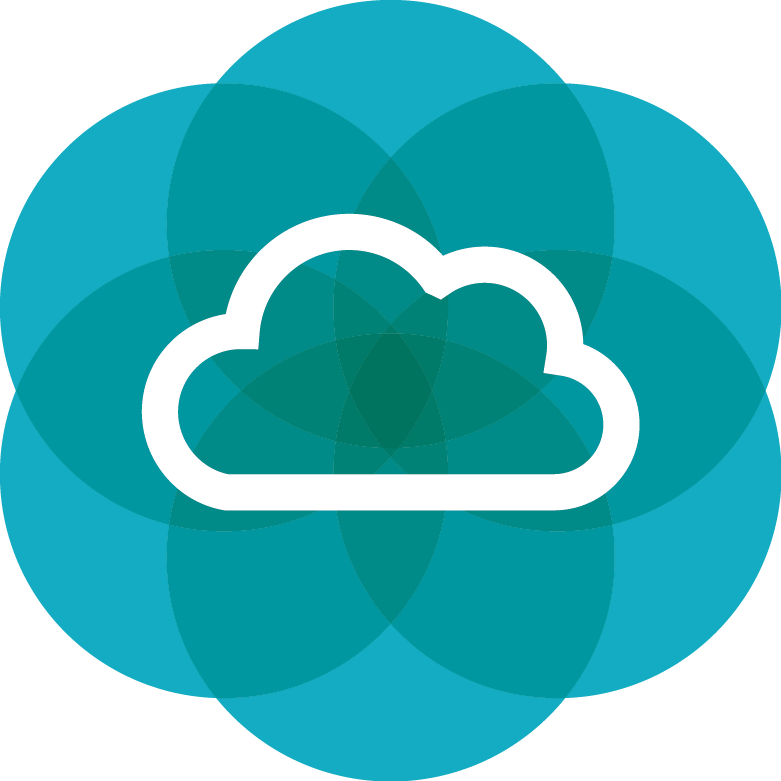 Welcome to the start of what we at Gluon HQ are calling ‘Cloud Week’! We have a number of blog posts lined up to go this week, where you will learn more about the Gluon Cloud offering.
Welcome to the start of what we at Gluon HQ are calling ‘Cloud Week’! We have a number of blog posts lined up to go this week, where you will learn more about the Gluon Cloud offering.
Gluon Cloud 1.0
As always, we start the week off with a bang – after many months running our Gluon Cloud in private beta mode, we are pleased today to be opening Gluon Cloud for commercial usage. Check out the Gluon Cloud page for more details, and the pricing table for our available tiers. In summary though, we have a free tier for developers that are exploring the capabilities and running small applications, and a number of premium tiers for real-world applications, more data, and more support.
Overview
The software world today is a vastly different place than it was a decade ago. Our reliance on the cloud has become complete – without our internet connections and cloud services many of our apps just don’t function. On top of this, most applications written to access the cloud don’t just need to retrieve data from a remote web service – they also need to communicate between themselves. These two concepts are regularly referred to as ‘data connectivity’ (for interacting with back-end systems, cloud providers, and other applications), and ‘data synchronizaton’ (for communication between instances of the application).
Another critical issue when thinking about cloud services is that the world of mobile and embedded is vastly different than what is considered normal in the enterprise application world. There are often many implicit assumptions on one side of the client / server setup that don’t always hold on the other side. For example, while direct communication between mobile devices, and from mobile devices to back-end services, is technically possible, it is not always advisable to do so for battery, life cycle, or expensive data connectivity reasons. Traditionally these concerns have not existed due to the use of ethernet-connected desktop machines directly accessing data that is sitting in a high-speed server rack.
Gluon has developed the Gluon Cloud service to act as the bridge between these two worlds. Gluon Cloud is designed to connect devices (be they desktop, mobile, or embedded) to back-end or cloud systems. On the client side, Gluon provides the Gluon Mobile library that can connect with ease to the remote server, and on the server side Gluon Cloud can not only host data for you, it can also connect to other back-end systems and cloud providers. Any necessary translation is done inside Gluon Cloud, leaving you the task of simply connecting your software to the Gluon Cloud and focusing on making a successful application.
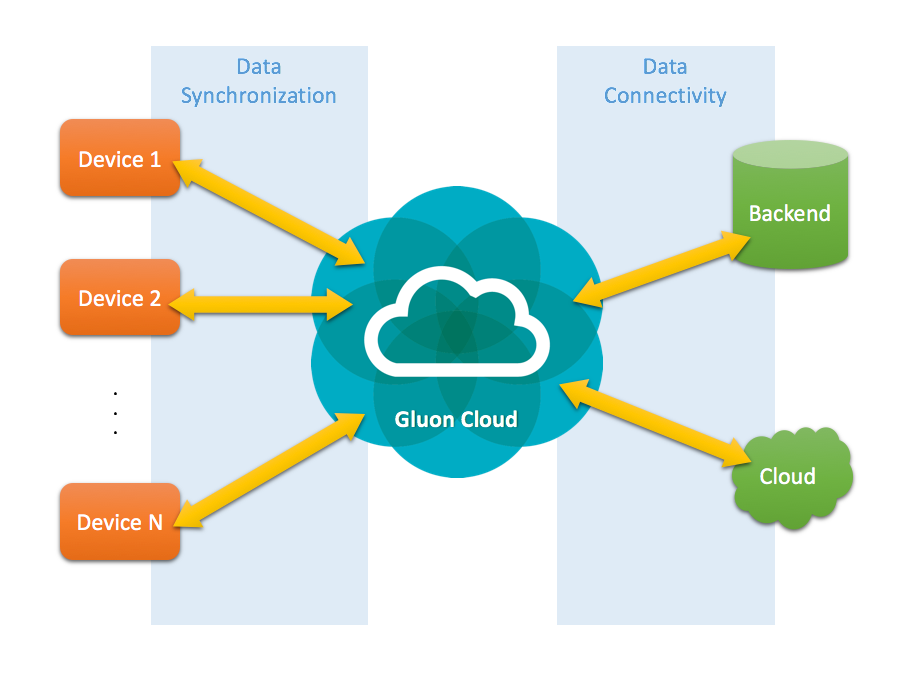
While Gluon Cloud is a public cloud service, we do realize that many companies prefer to have all their data inside their corporate networks. For these customers, we provide Gluon Cloud On-Premise, which contains all the functionalities of Gluon Cloud inside a company VPN. If you prefer this approach, your data doesn’t leave your infrastructure and you have a completely isolated Gluon Cloud. Contact us if you would like more information.
As noted, this week is Gluon’s ‘Cloud Week’ – we will be posting a series of blog posts every day where we will be talking about data synchronization and data connectivity, and how to leverage these in your application with the help of Gluon Cloud. Make sure to check back later this week to read more about the capabilities of Gluon Cloud! Today however, we want to talk about two important topics: connecting to Gluon Cloud (using Gluon Mobile), and to introduce you to the Gluon Cloud Browser application.
Connecting to the Cloud with Gluon Mobile
Connecting your JavaFX application to Gluon Cloud is very straightforward, and it is explained in the Gluon Mobile Connect documentation section. Gluon Mobile provides all the necessary support to enable you to connect your JavaFX Application to Gluon Cloud.
The two main features of Gluon Mobile, when used to access Gluon Cloud, are:
- Gluon Mobile maps all data stored in the Gluon Cloud using the powerful JavaFX concepts of observable properties and lists. This means when the data changes on the server, it automatically changes in your application user interface with no additional code necessary.
- Gluon Mobile supports bi-directional data transfers and notifications between Gluon Cloud and other enterprise systems. This means if you change your list structure or data object locally it is automatically pushed and persisted on the Gluon Cloud (if required).
The ability for Gluon Charm to leverage and extend the capabilities of JavaFX to enable support for back-end systems and cloud providers can massively simplify development. Gluon Charm offers custom ObservableObject and ObservableList implementations (called CharmObservableObject and CharmObservableList). These implementations allow for remote binding, while still providing all functionality of ObservableObject or ObservableList. The huge advantage of this is that client developers don’t need to write any boilerplate code for retrieving and synchronizing remote data with local data, and subsequently with their UI Controls, as all of this can be done automatically and transparently.
Shown below is a picture that summarizes this – as far as the UI control is concerned, a CharmObservableList, retrieving data from a remote data source (such as the Gluon Cloud) is none the wiser as to this fact, and operates exactly as it usually would.
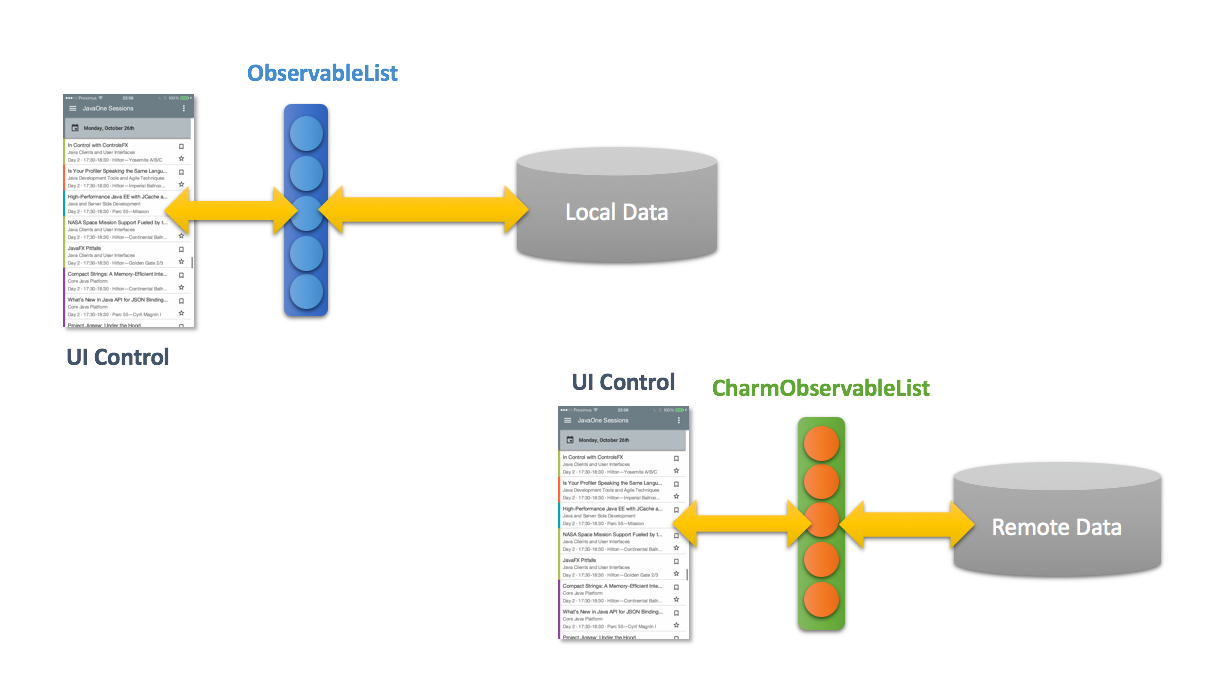
Gluon Charm allows you to work with remote data without the need for adding a remote component. Your data is stored in Gluon Cloud, and Gluon Cloud will take care of synchronizing it with the other instances of your application. There is no need to write and maintain server-code for this. If you already have existing back-end code, it is very easy to integrate this with Gluon Cloud as we will show in one of our next blog posts.
Gluon Cloud Browser
The other important tool that we offer alongside Gluon Cloud is Gluon Cloud Browser. For Business and Enterprise tier customers, it is a freely available application that puts you in control of your Gluon Cloud. You can see and edit everything, and control your cloud instances. Over time Gluon Cloud Browser will grow to cover more and more important functionality of the Gluon Cloud service. For now we just wanted to share some screenshots of the application as it is not quite ready for release, but it will be released very soon. We welcome your feedback!

